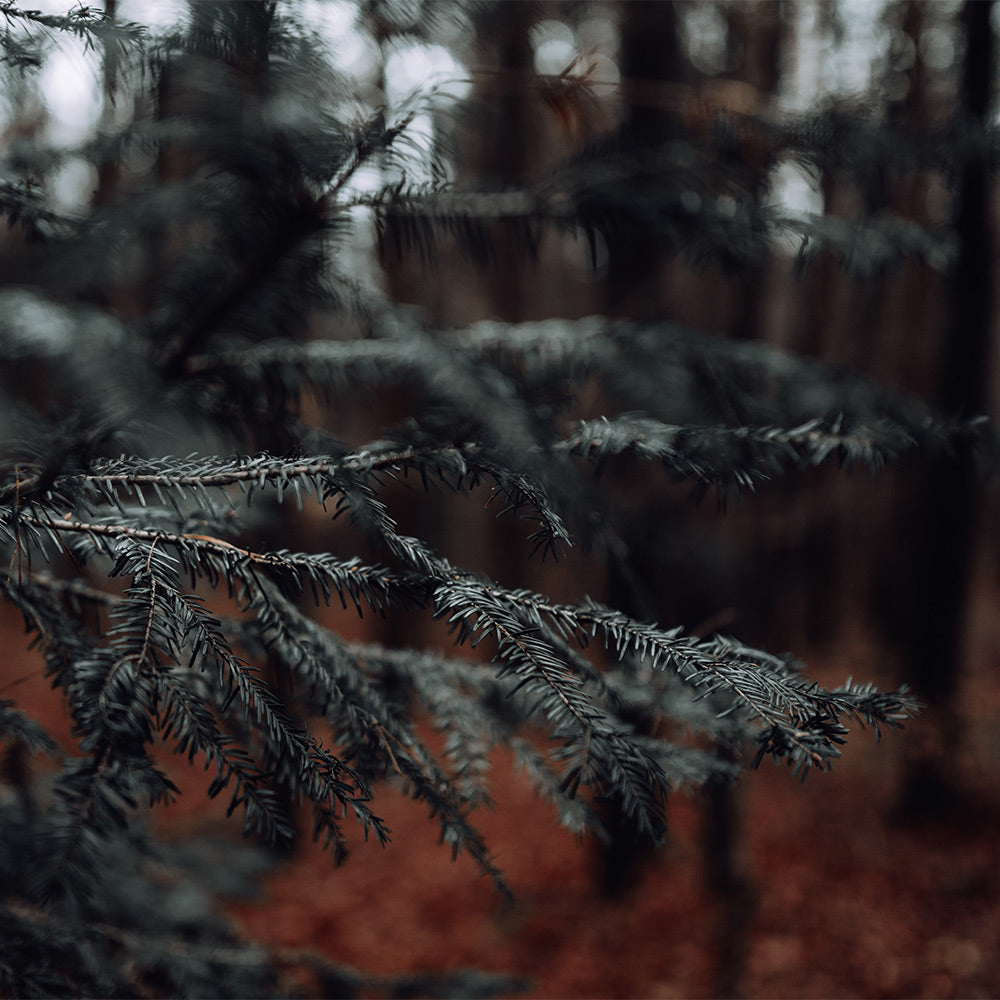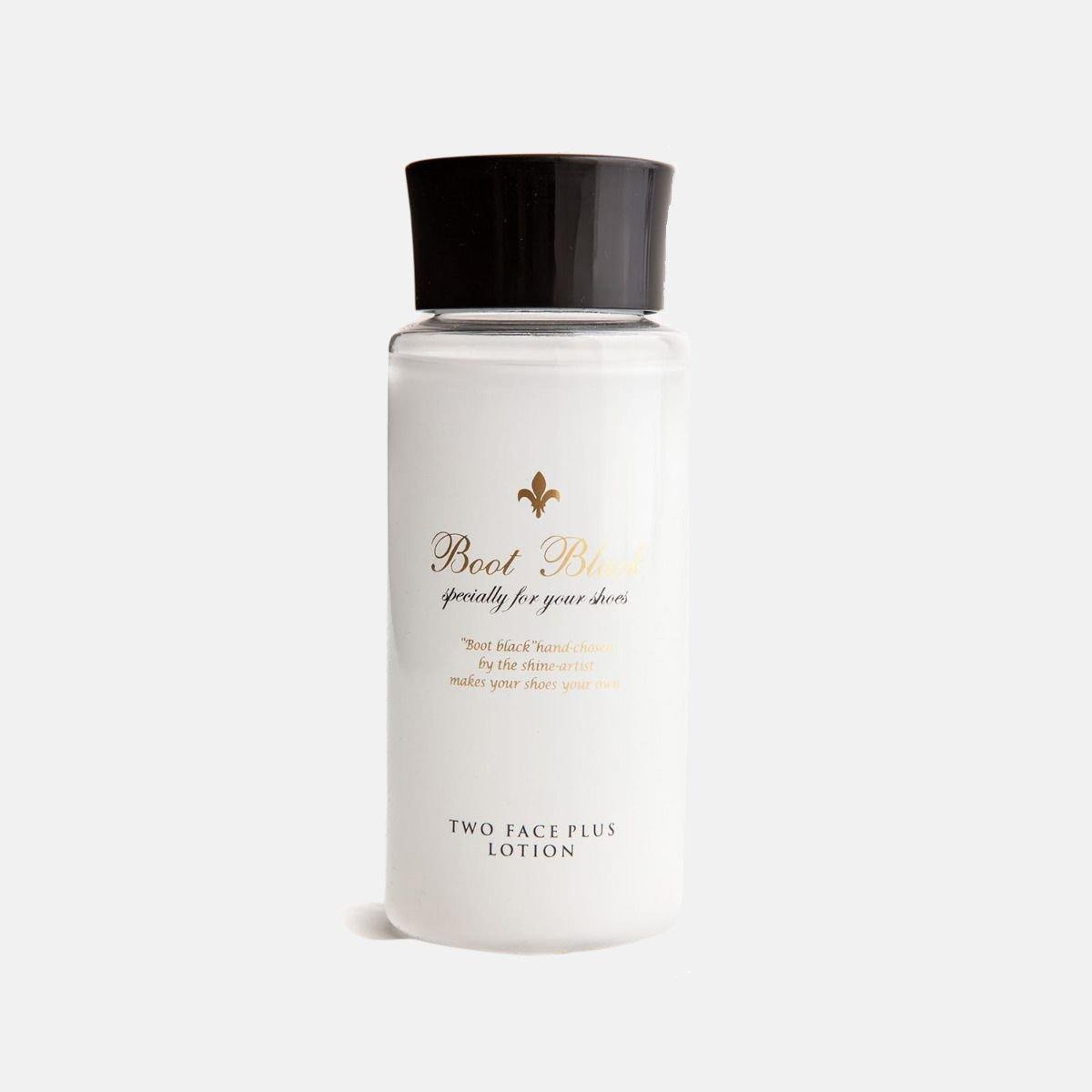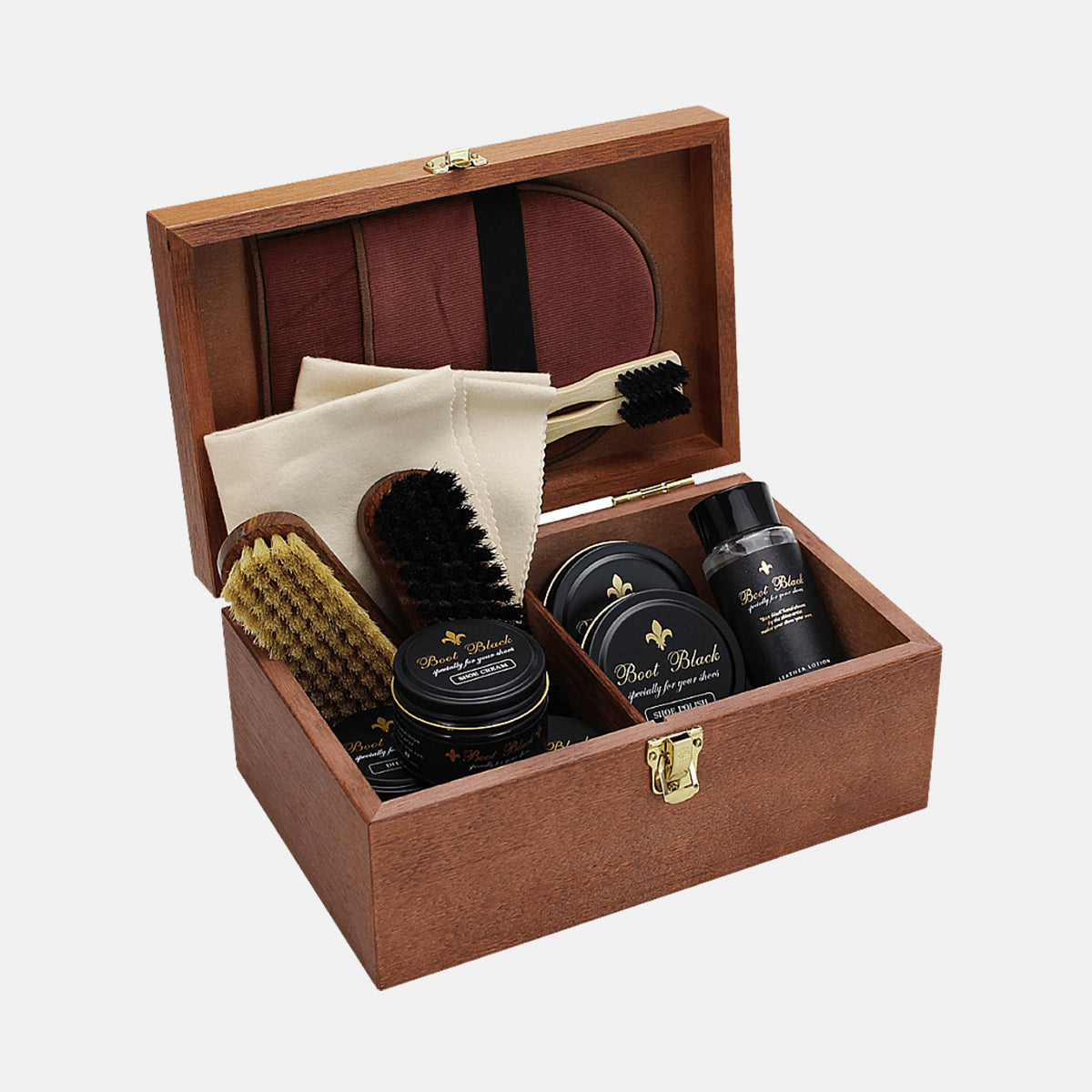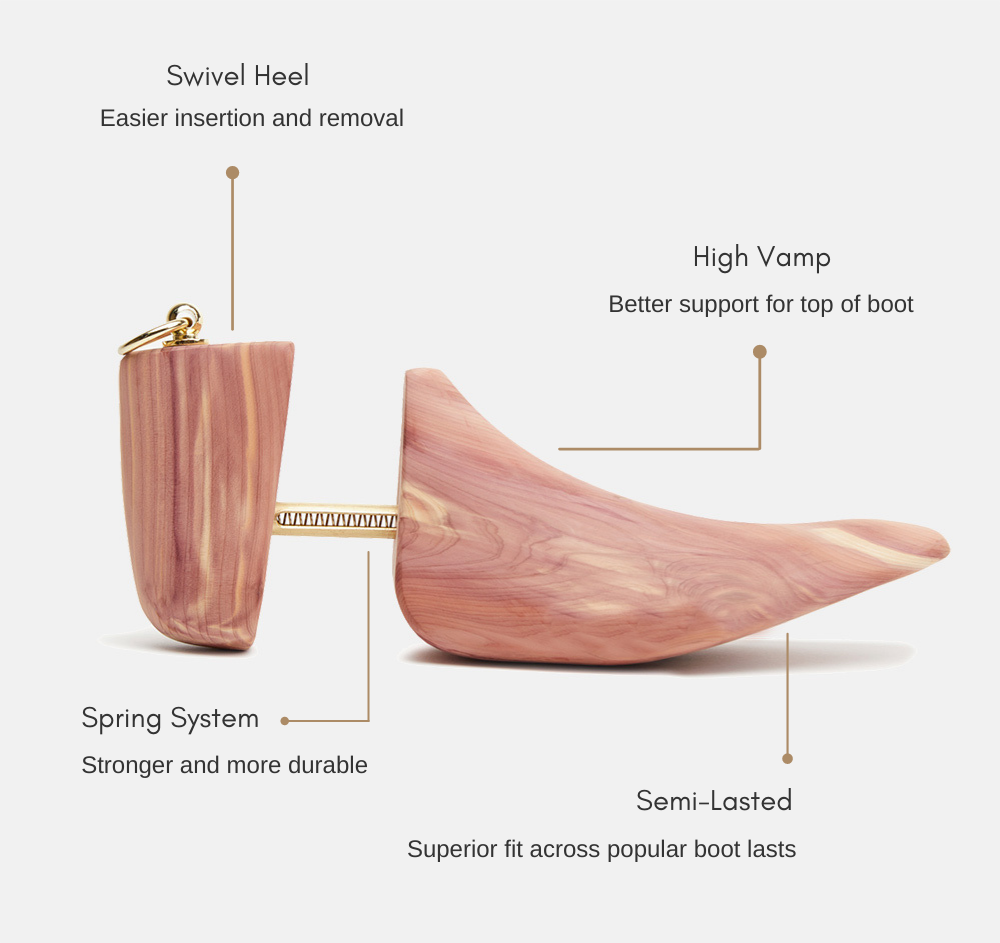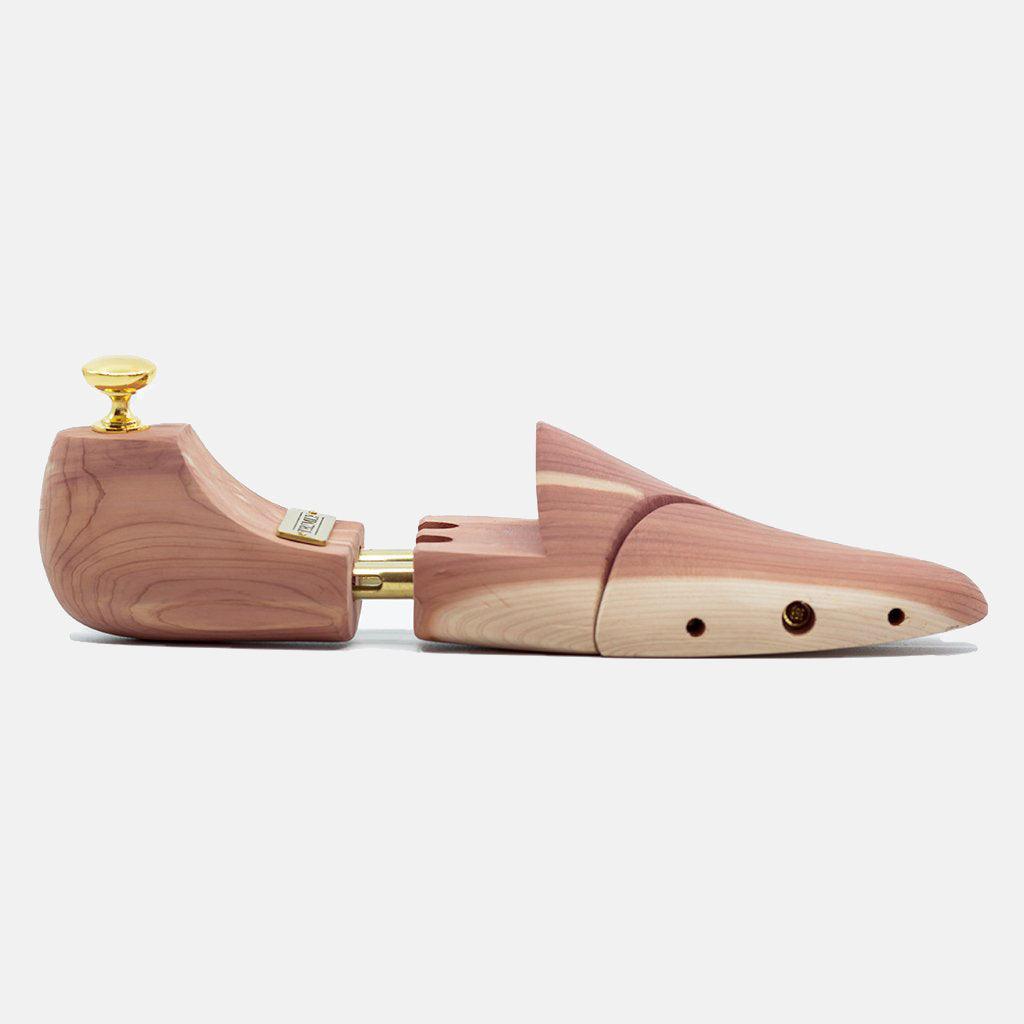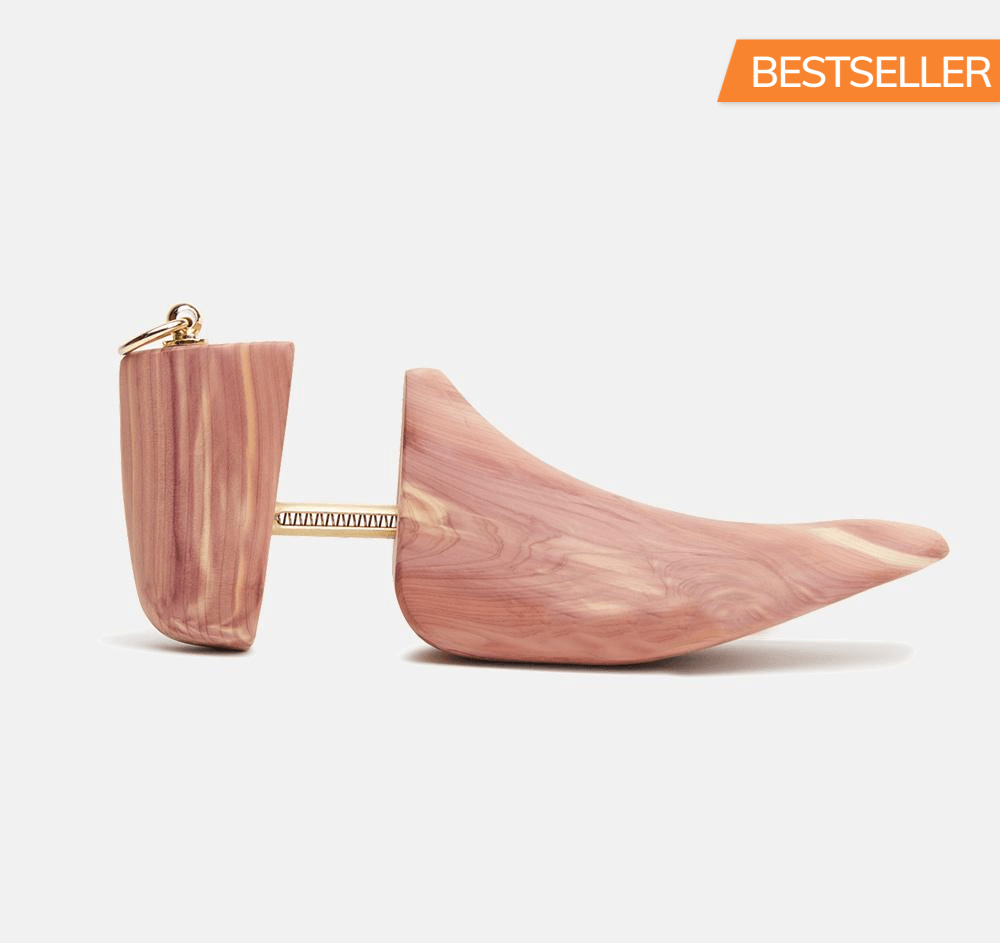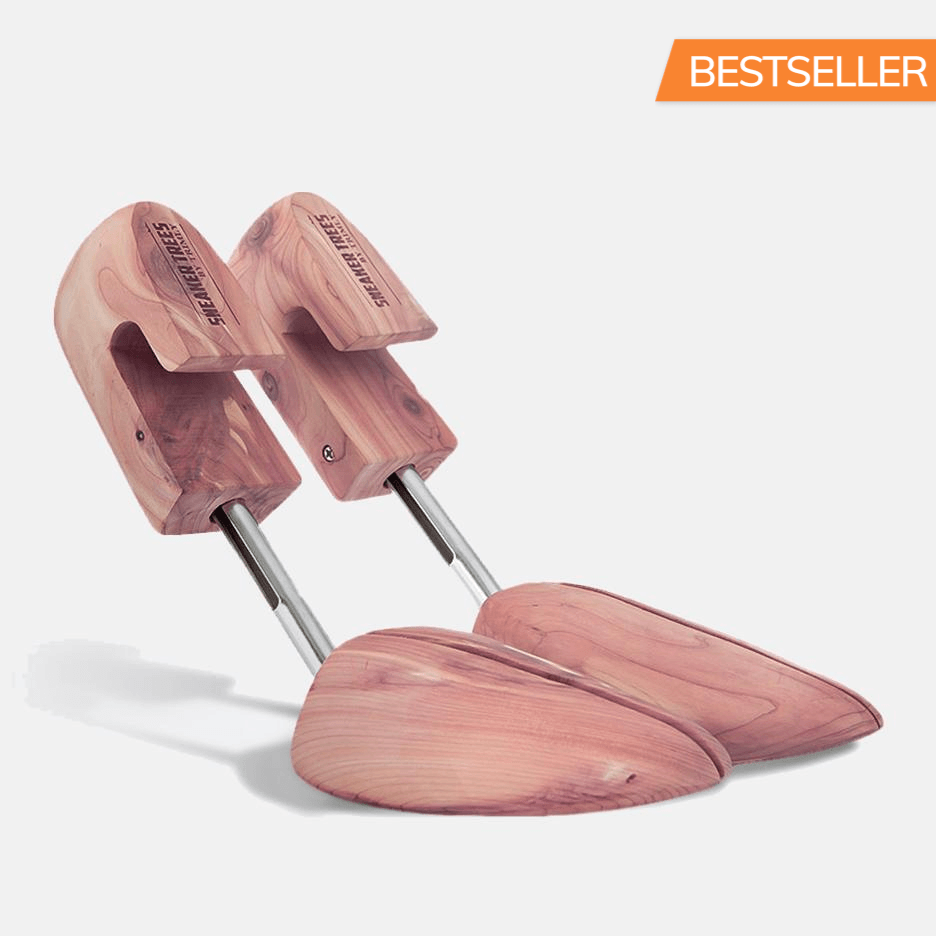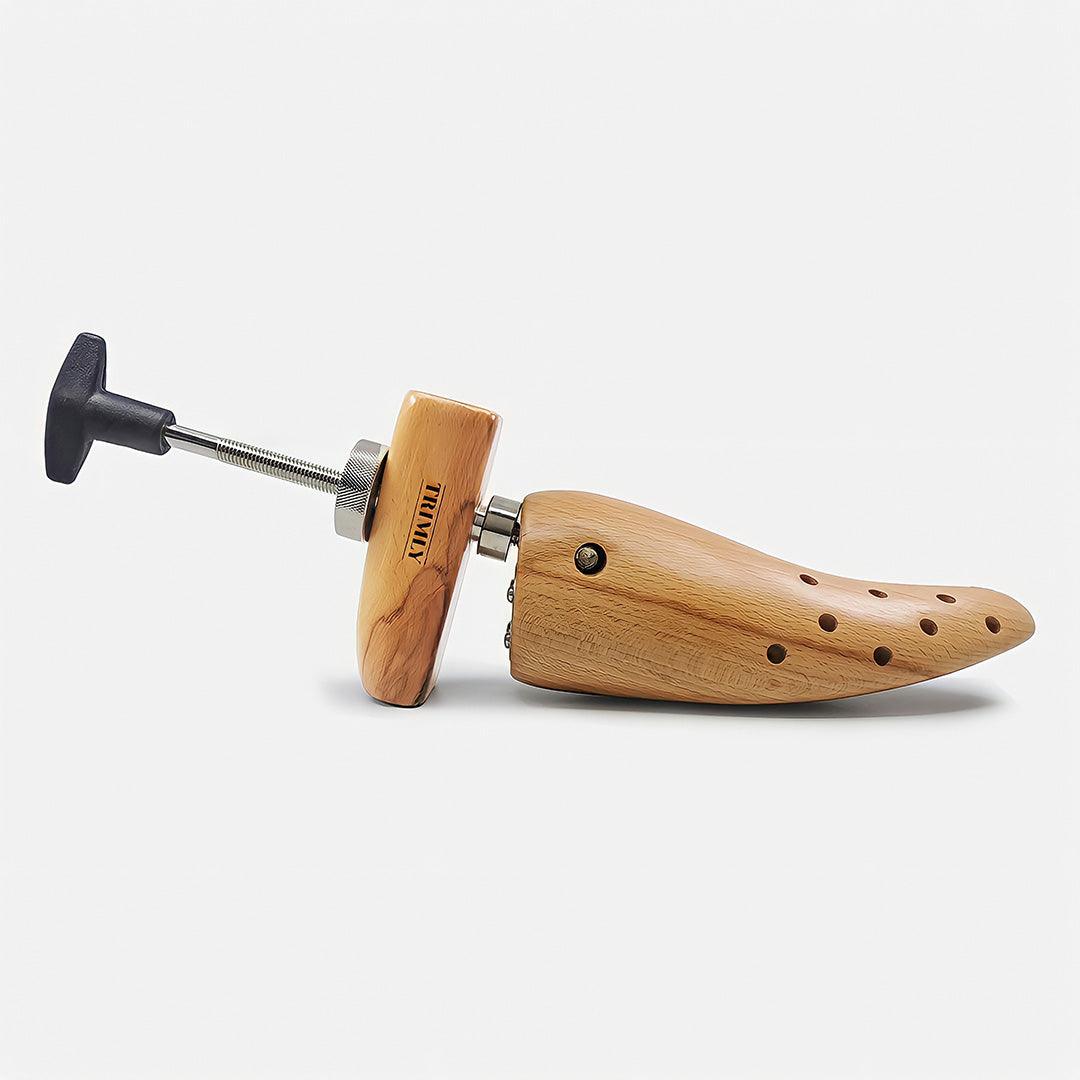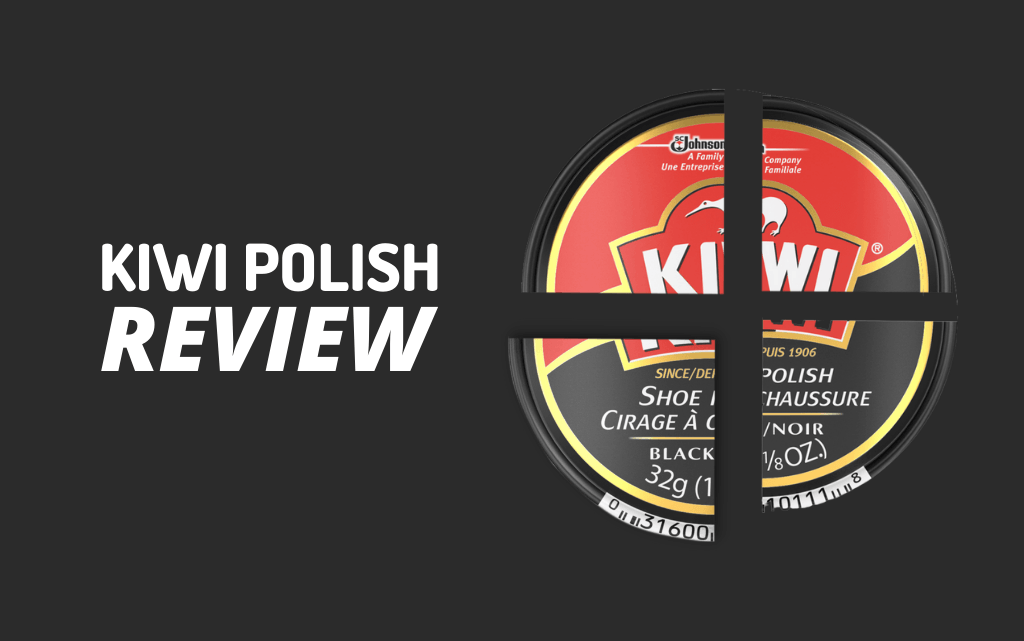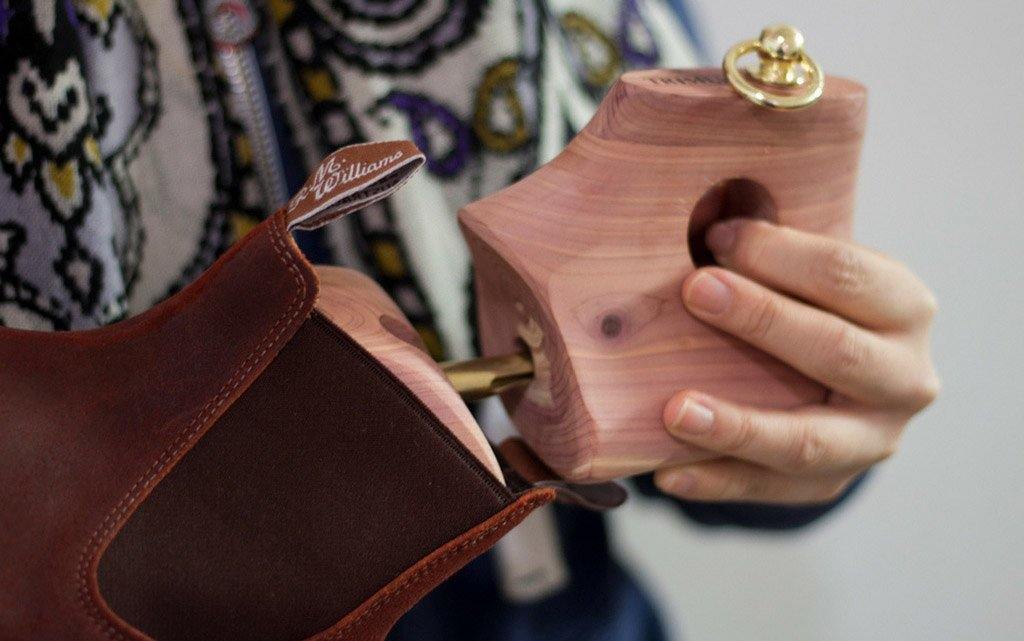Your Cart is Empty
WHAT ARE SHOE TREES?
A shoe tree is a device in the approximate shape of a foot that is placed inside of a shoe when not being worn. Shoe trees undertake 3 primary tasks:

Benefits of shoe trees
Popular shoe tree styles
There are so many ways in which a shoe tree can be different. Different shape. Different mechanism. Different material. Different grading etc. Below are some of the more popular styles you will find today.
Premium Shoe Trees
This shoe tree's mould is taken from a generic last. It features a double bar spring system and an adjustable toe spring to accommodate different shoe widths. It is the shoe tree of choice in many parts of Europe and commonly known as the 'European Style'.
Boot Trees
Boot trees are for ankle-high boots Their main function is to support the boots higher heel and vamp. Different models are available, ours is semi-lasted from popular boot styles in Australia.
Split Toe Shoe Trees
This shoe tree operate on a spring and spreader system. As the shoe tree is inserted into the shoe, the split toe is spread apart and keeps the shoe's leather taut. The heel's overhang grip is a very user-friendly design. Popular in North America.
Material Selection
Most popular - natural cedar wood
-
The cedar oil in shoe trees does more than just deodorise the shoe. It contains anti-bacterial and anti-fungal properties, and also acts as an insect repellant.
-
Cedar is characterised by its light-weight, even grain, and relatively consistent density. Knots and fine cracks are sometimes visible but are not a defect and common with natural wood products.
-
Western & Eastern Red Cedar commonly used in shoe tree making is rich and inviting in colour. The heartwood ranges from a pale red through to a richer dark brown. The sapwood is usually a pale yellow or white colour.
-
Cedar is one of the most durable woods available with natural resistance to deterioration.
-
Cedar is very hygroscopic and will absorb moisture at a rate faster than airing a shoe at room temperature.
-
Studies have found that bacteria, including Escherichia coli, is sensitive to cedar oil, which has clear deodorising benefits to footwear.
Characteristics of natural cedar
Benefits of using cedar
